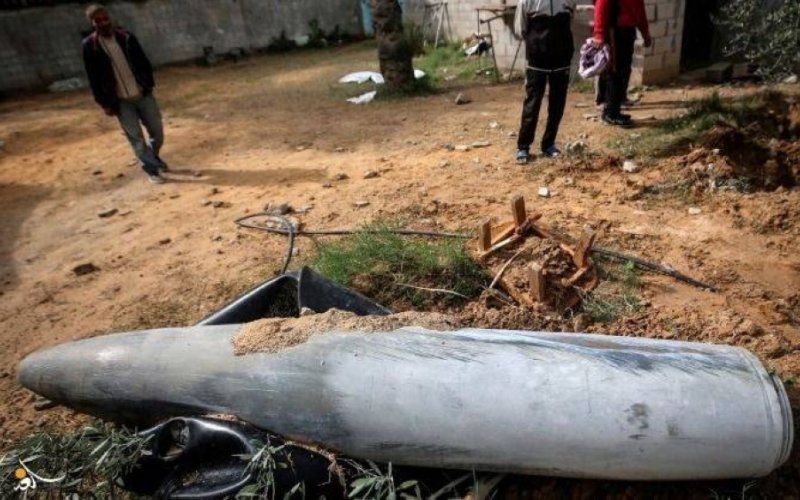GAZA, (PIC)
Unexploded bombs that could detonate at any moment are found everywhere in the Gaza Strip areas. They are remnants of missiles and shells resulting from the brutal shelling carried out by the Israeli occupation forces on the Gaza Strip during the seven months of the war. These unexploded bombs pose the greatest challenge that threatens the lives of Palestinians after the war ends.
These explosive remnants are scattered throughout the Gaza Strip, in fields and schools, and under the rubble of destroyed buildings. Some missiles have even penetrated the ground and settled beneath the surface without detonating.
The Gaza Strip has been subjected to multiple wars in recent decades, which means that there has been a problem with explosive remnants in some areas even before the current war. It should be noted that the people of Gaza do not have the resources to dispose of these deadly remnants themselves.
UN warning
The United Nations has warned that Gaza is going through the most dangerous phase due to the large quantities of unexploded bombs left from the ongoing Israeli aggression on the Strip.
This statement came from the director of the UN Mine Action Program in Palestine, Mongi Pertche, during the 27th meeting of mine action directors and UN advisors held in Geneva on Monday.
Pertche warned that most accidents would occur when displaced people begin to return to northern Gaza, as they are unaware of the locations of these unexploded bombs.
The director of the UN Mine Action Program emphasized the necessity of necessary training on risks when people start to return to the northern part of the Strip.
Jean-Pierre Lacroix, the United Nations Under-Secretary-General for Peace Operations, shared these concerns and expressed his support for the UN Mine Action Team in their humanitarian efforts and risk assessment work.
3,000 unexploded bombs
International humanitarian organization “Handicap International” has announced that Israel has dropped 45,000 bombs on the Gaza Strip since October 7 of last year until mid-January, with at least 3,000 of them failing to detonate. This poses a danger to the besieged population of the Strip.
Radio France Internationale quoted Jean-Pierre Delomier, Deputy Director of International Operations, as saying that his organization is waiting for a ceasefire in Gaza to gain a clearer understanding of the situation and begin the process of mine and bomb removal.
In December, Charles Perche, an explosives removal expert with the United Nations Mine Action Service, was quoted by The Washington Post as saying that Gaza is filled with hundreds, if not thousands, of unexploded ordnances ranging from makeshift rockets to advanced ammunition provided by the United States. He added, “The contamination is going to be incredible, like a scene from World War II.”
Perche, who visited Gaza during the peak of the Israeli bombing campaign, pointed out that these unexploded bombs could be one of the most widespread threats as they will persist long after the war and pose risks to generations of civilians. Even during periods of relative peace in Gaza, leftover munitions from previous rounds of fighting regularly kill and maim, and the problem is now exponentially worse.
The ongoing Israeli aggression on Gaza since October 7 has left millions of tons of rubble filled with unexploded ordnance, a task that will take more than a decade to clear, according to a senior official in the United Nations mine clearance field, as reported by The Guardian.
Pierre Lodehmar, former head of the United Nations Mine Action Service in Iraq, said that the Israeli war on Gaza has resulted in 37 million tons of debris, most of which is filled with unexploded bombs that could take more than a decade to remove. He added, in a recent press conference in Geneva, that after nearly seven months of war, there is an average of 300 kilograms of debris per square meter of land in Gaza.
The UN official warned that based on the current amount of debris in Gaza, assuming the availability of 100 trucks for rubble transport, we are talking about 14 years of work to remove that debris.
In a report published in December, The Washington Post warned that the Israeli bombardment, which turned entire neighborhoods in Gaza to dust, has made parts of the Strip dangerous for years due to unexploded bombs.
The report emphasized that the war, no matter how long it lasts, is only the beginning. Buildings have been leveled, infrastructure including water and sewage networks has been destroyed, and many of the weapons used in Gaza, including white phosphorus, can seep into water supplies.














